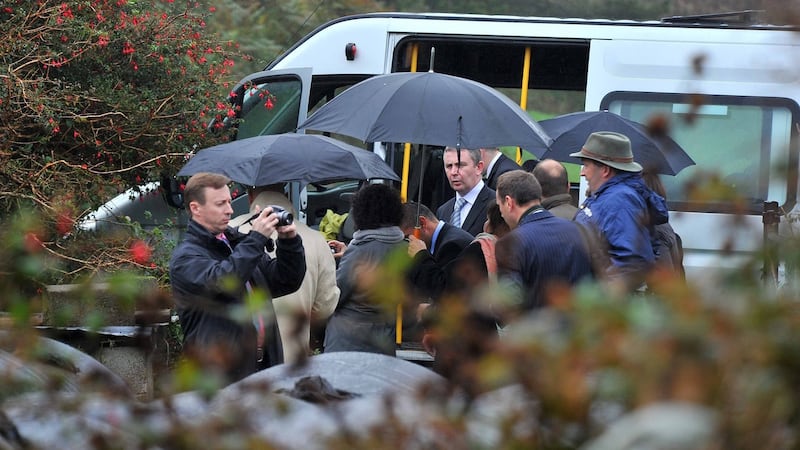A report from the Garda Síochána Ombudsman Commission (Gsoc) is highly critical of the handling of the Garda investigation into the death of Sophie Toscan du Plantier but has found no evidence gardaí tried to frame Ian Bailey for her murder.
The body of Ms du Plantier (39) was found close to a laneway near her holiday home outside Schull, in Co Cork, two days before Christmas 1996. The film producer was found dressed in her nightclothes and she had been badly beaten. She had died from multiple head injuries.
Mr Bailey, an English journalist who had moved to west Co Cork in 1991, was arrested and questioned, and in September 1997 a file was sent to the director of public prosecutions, who directed that no charges be brought. Mr Bailey has always denied any involvement in the killing, and he has claimed that the Garda tried to frame him.

The Gsoc report, released yesterday, said the number of statements and exhibits that have gone missing suggested the investigation was not properly managed, particularly in relation to the incident room set up to investigate the killing.
“The witness statements provided to Gsoc from senior Garda members do not indicate clearly who was in charge of the investigation from the outset and through the enquiry and who was responsible for making the strategic decisions – including the arrest plans,” it said.
However, it concluded there was no evidence to support claims by Ian Bailey, his partner Jules Thomas and witness Marie Farrell that the Garda investigation into Ms Toscan du Plantier’s murder in west Cork in 1996 was corrupt.
“While there was evidence of a lack of administration and management of aspects of the investigation into the murder of Sophie Toscan du Plantier, there was no evidence of the high-level corruption by gardaí alleged by the complainants,” said the Gsoc investigators.
Blood-spattered gate
The failings in the investigation included the disappearance of a blood-spattered gate, taken from close to where Ms Toscan du Plantier’s body was found, a French wine bottle found four months after the murder near the scene of the killing, and Mr Bailey’s black coat.
It also appeared that some pages had been deliberately cut or removed from “jobs books” which documented how gardaí approached the investigation. And it appeared this happened some time after a 2002 review as they were not noted as being missing then by the review team, Gsoc found.
Gsoc found no evidence that Ms Farrell was coerced or intimidated by gardaí into making false statements, as alleged by Ms Farrell and Mr Bailey, and secret telephone recordings made without the knowledge of gardaí suggest her relationship with one garda was not coercive.
‘No pressure’
“The review of these phone calls indicate that Marie Farrell had been under no pressure in her interactions with a detective garda,” said Gsoc, though it commented that the relationship between the detective and Ms Farrell “would appear to have been questionable at times”.
Gsoc also found no evidence to suggest Mr Bailey and Ms Thomas were unlawfully arrested when they were first detained on February 10th, 1997 and then, in Mr Bailey’s case, again on January 27th, 1998 and, in Ms Thomas’s case, on September 22nd, 2000 for questioning about the murder.

“From the material reviewed by Gsoc in this investigation, it appears that there was a reasonable belief held by gardaí at that time (1997) that Ian Bailey and Jules Thomas were responsible for the murder of Sophie Toscan du Plantier. The arrests of both were therefore lawful,” it concluded.
From a review of material obtained from the Garda investigation and from interviews with some 55 witnesses, Gsoc found there was “no evidence sufficient to sustain either a criminal or disciplinary charge” against serving or retired officers involved.
Contacted by The Irish Times, Mr Bailey said he was still studying the 36-page report. He was "disappointed but not surprised" by what he had read. "It's very anodyne and wishy-washy," he said.








